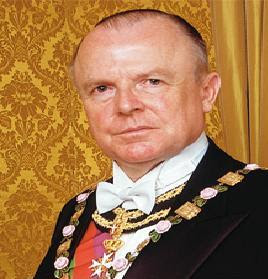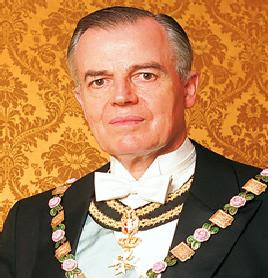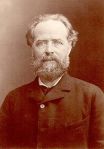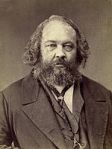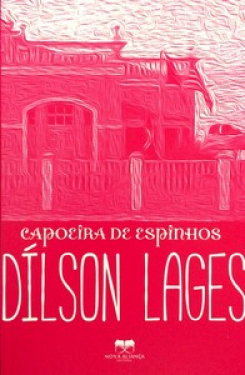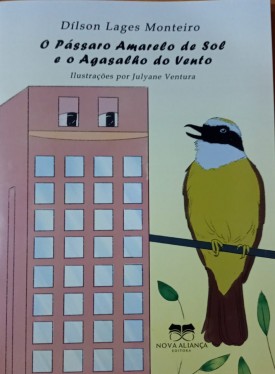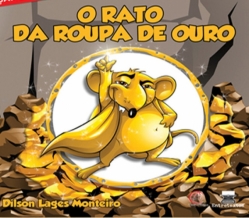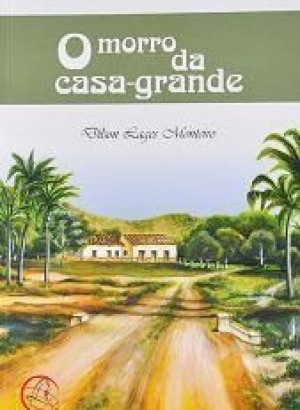Currently occupying some 8,511,965 square kilometres and with a population standing now at 160 million, Brazil was ‘discovered by Portuguese navigators in 1500’, colonised through the use of the lash and enriched by the use of slave labour, as were other countries ‘discovered’ by the Spaniards, the Italians, the Dutch, the French, the British and others.
The social question came into existence when a few people rented and bought human muscle to clear the land, lay roads, build bridges, villas, railways and anything likely to afford comfort to Brazil’s masters of wretchedness and progress.
500 years of Brazilian history pretty much covered the entire range of events, with human beings bought and sold at auctions in public squares and male slaves set to breeding children (cheap labour involving no risk) with healthy female slaves, working for their keep, natives swindled out of their landholdings, and jails, thrashings meted out on the whim of the bosses and every conceivable means man might devise for lording it over his fellow-man.
Out of this oppression runaway slaves formed quilombos (fugitive slave settlements), the largest of which was established in Palmares and survived for almost a century (1602–1695), with a population of 20,000 living in a community with no laws and no masters. Zumbi and his comrades anticipated Tiradentes by two centuries when they tried to set up a nation within Brazil.
After independence in 1822, following the Ypiranga Declaration by Pedro I (who would have been Pedro IV of Portugal), Brazil became prey to lots of escapes and popular revolts: in 1823 there were the Setembrada and Novembrada revolts, the Ouro Preto uprising in 1833, the Sabinada in 1837, the Balaiada in 1838, the Cabanagem revolt in 1835–1840, the Guerra dos Farrapos revolt in 1835–1845, the Liberal Revolution in 1842, the Praiera Revolution in 1848 and the Proclamation of the Republic in 1889. Shortly before the latter, on 13 May 1888 the Golden Law abolishing the trade in human beings had been promulgated.
All this rebelliousness aimed at altering the mean, shameful, inhumane practices of the bosses. Revolutionary ideas arrived from the Old World by ship, in books published in Europe. They entered through ports like Rio de Janeiro and Santos and Brazil’s borders were breached and the country invaded by the revolutionary ideas in the heads of every immigrant who arrived in search of freedom and fertile ground in which to plant anarchism.
In the last two decades of the 19th century, some young Brazilians left to study in France and Portugal and were exposed to libertarian ideas there. Others studied in Brazil itself and came across books by Kropotkin in the bookshops and, upon reading them, found answers to their preoccupations. Around this time Manuel de Mendonça wrote the social novel Regeneração.
In Bahia, the doctor and hygienist Fabio Luz came across Kropotkin’s Paroles d’un révolté, read this revolutionary book and became an anarchist. He wrote and published two early 20th century novels Ideólogos and Os Emancipados, on which basis he is regarded as the first Brazilian writer to offer a novelistic treatment of the social question.
These two anarchist intellectuals were joined by Elisio de Carvalho, medical student J. Martins Fontes, Pedro do Couto, Rocha Pombo, Pausilipode da Fonseca, João Gonçalves da Silva and Maximino Maciel to form the group that later published the review Kultur in Rio de Janeiro and launched the Popular University in 1904. Both of these were anarchist ventures.
Avelino Foscolo in Minas Gerais state, Reinaldo Frederico Greyer in Rio Grande do Sul, Ricardo Gonçalves (there is a street in São Paulo named after him), Benjamin Mota, Edgard Leuenroth and João Penteado in São Paulo, Orlando Corrêa Lopes, Francisco Viotti, Domingos Ribeiro Filho, Lima Barreto and José Oiticica in Rio de Janeiro were the founding fathers. From Portugal came Neno Vasco, a celebrated lawyer who made a name for himself as an anarchist in São Paulo (1901–1911). Together they were all responsible for planting the seeds of anarchism in Brazilian soil.
In 1890 Giovanni Rossi arrived from Italy with his colleagues to establish the Cecilia colony in Paraná. To São Paulo came the Italian Artur Campagnoli and, shortly after him, Gigi Damiani, Alexandre Cherchiai, Oreste Ristori and Frederico Kniestedt, sound militants from Italy and elsewhere who, following a leap in the dark and adapting to the tropical Brazilian climate, forms of work, customs and cuisine, still had to learn the Portuguese language. The only particular in which Brazil differed not a whit from Europe was the social question, man’s exploitation of his neighbour.
It can be fairly stated that the driving force behind the anarchist movement in Brazil came from Italy, in the shape of Italian immigrants who would inject greater intensity and urgency into the social question and their demands and embarked upon systematic propaganda on behalf of anarchism and anarcho-syndicalism. Dozens of newspapers were published in Italian or Portuguese, hundreds of lectures were given and revolutionary plays were staged, leading to lots of arrests and deportations. Others were forced to look to a change of trade in order to go to ground, whilst a few bettered themselves and gave up their beliefs.
As a result of this ‘sowing’ in which pride of place went to the Italians, followed and supported by the Portuguese, the Brazilians, the Spaniards and others, upwards of one hundred anarchist and anarcho-syndicalist newspapers and reviews (titles, that is) were in circulation in Brazil, including four daily newspapers. They founded and ran rationalist schools, set up theatre groups and staged more than a hundred libertarian and anti-clerical plays, held anti-war rallies and rallies against compulsory military service and pressing for reduction in working hours (at a time when these varied between 10 and 16 hours per day), fought for health and work insurance and for countless improvements to make work less of a nightmare for the Brazilian proletariat. Upwards of a thousand of them were summarily deported as foreign agitators and dozens perished fighting with the police. The first murdered anarchist was the Italian Polenice Mattei, killed in São Paulo on 20 September 1898.
If we are to understand the trajectory of anarchism in Brazil, which is intermingled with the revolutionary syndicalist or anarcho-syndicalist movement, we have to have a short encapsulation of the common ground and differences between them.
By the Anarchist Movement is meant the activity of anarchist groups, in concert or separately, and made up of organisational cells, communes, groups, study centres, unions and federations. The anarchist movement is not exclusively an organisation of workers for workers; it is the action of individuals who oppose and join battle against capitalism, seeking the destruction of the State and the establishment of a New Social Order which is horizontally decentralised and self-managed. Not a revolt of stomachs but rather a revolution in consciousnesses! The anarchist movement does not stop at the class struggle, nor does it seek to replace the governors with the governed; its object is to do away with classes and create a brotherhood of man heedless of colour, age or sex. It does not aim at some metaphysical equality or some equality of size, strength or needs, but at equality of opportunity, rights and duties for all.
Anarcho-syndicalism, a strand of trade unionism, was so-called after the split created at the IWMA’s 5th Congress in The Hague in 1872 and it was espoused by a majority of Brazilian workers prior to the installation of fascist syndicates by Vargas’s Estado Novo regime in 1930. Anarcho-syndicalism is at once a doctrine and a method of struggle.
As a doctrine it takes the worker as the basic cell of society striving to complete his development. As a method of struggle, it seeks to end capitalism through direct action, through a revolutionary general strike and to replace it by a society run by self-managing workers. Its strength resides in a spectrum of freely associated workers’ voluntary associations (trade unions, unions and federations).
What differentiates anarchism from anarcho-syndicalism is the methods at their disposal. The anarchist movement is made up of individuals and aims to turn them into active, independent units capable of producing and administering along self-managerial lines without political or religious crutches or leaders: it reaches as far as freedom and intelligence can reach. Syndicalism is a workers’ movement (all trades included) geared more to the administration of production and consumption. Its remit is limited and materialistic and it lacks the range and reach of the anarchist philosophy of life.
Bolshevism is a variety of socialism. It was the political doctrine of the Russian Social Democrats eager to see comprehensive implementation of the maximum programme of Lenin and Plekhanov and is also used as a synonym for communism and Marxism. It emerged in August 1903, during the 2nd Congress of the Russian Social Democratic Party begun in Brussels and completed in London. It came to Brazil following the 1917 Russian revolution and its profile was raised through the formation of the Communist Party of Brazil (PCB) in 1922. It competed with the anarcho-syndicalists for the upper hand in the unions and from then on became a serious opponent of the anarchist and syndicalist movements.
Looking back over the historical route of the Brazilian libertarian movement, we come upon socialists of the Fourier school, Garibaldians, Maria Baderna from the Mazzinian tendency, anarchist followers of Proudhon and Bakunin and revolutionaries from the Paris Commune entering Brazil by irregular means in search of political asylum turning up in Rio Grande do Sul, Paraná, Santa Catarina, Pernambuco, Rio de Janeiro and São Paulo.
As this writer sees it, the history of anarchism on Brazilian soil finally began to be written in 1888 with the arrival of Artur Campagnoli. Campagnoli was a sound Italian militant, a jewellery artist who died in São Paulo in 1944 and who is credited with having established himself as the unchallengeably highest profile anarchist in Brazil. He arrived in São Paulo in 1888, bought what was regarded as an infertile plot of land and launched the Guararema Anarchist Colony with the help of some Russian, French, Spanish and (mostly) Italian anarchists. By the 1920s and 1930s he had the aid of Brazilians too. Two years later the agronomist Giovanni Rossi and around 200 immigrants arrived from Italy in two batches to set up the Cecilia Colony in Paraná. From 1890 to 1894 that anarchist experiment held out against pressures from the republican government which had just been installed in Brazil. Strangled by undue tax burdens and by army incursions, the die-hards among them awaited deportation and settled in the environs of the colony under the palms where the black and red flag of Anarchy fluttered for four years.
In the same period, there were anarchist newspapers such as Gli Schiavi Bianchi (São Paulo, 1892) in Italian and L’Avenire (São Paulo 1893) in Italian and Portuguese, with Galileu Botti in charge and, in Italian, Il Risveglio (São Paulo, 1893).
In 1898, the Portuguese-language O Libertario appeared in São Paulo under the management of Benjamin Mota. Also in 1898, O Despertar was published in Rio de Janeiro under the guidance of José Sarmento Marques and in January 1898 the First Workers’ Congress was held in Rio Grande do Sul with two anarchist clubs participating. On 20 September, Brazilian anarchism’s first martyr Polenice Mattei, was murdered in São Paulo.
In over a hundred years, the anarchist movement in Brazil suffered countless set-backs. It eventually enjoyed the support of four daily papers, dozens of weeklies, monthlies, bi-monthlies and periodicals. But it experienced hard times when it had no mouthpiece with which to rally its militants.
Over that period, a number of books and pamphlets were published: most of these at the instigation of libertarian groups that raised subscriptions to cover the publication costs. Classic works were issued by commercial publishing houses. Adding the libertarians’ output to that of the booksellers, the number of books published on Brazilian soil stood at a little over twenty by 1964.
In 1964 the military dictatorship took power and with it came a fruitful period of great activity in the publication of libertarian works. In the midst of repression, writers and publishers stood up to the dictatorship in the decade of greatest repression (1970–1980) and amid the flood of authoritarian trash the researching and publication of anarchist books continued.
In Brazil, anarchism and anarcho-syndicalism worked very closely together as movements. The differences between them are apparent from the press. The anarchists, who give pride of place to ideology, carry out educational work. They see the human being as the most important ‘element’ in need of professional as well as cultural preparation so that every militant might be able to shift for himself, without the crutches of religion, employer or police. They always give the mind priority over the belly. To these ends anarchists set up free schools, people’s universities, social drama groups and engage in intensive educational, sociological, broadly cultural libertarian propaganda.
During the first two decades of the 20th century they sponsored stunning demonstrations on behalf of the founder of the Modern School, Francisco Ferrer and of comrades who were jailed, tortured and expelled from Brazil. They supported and helped the Russian workers at the time of the 1905 revolution, backed the Mexicans in 1910 and the Russians again in 1917, revered the Chicago Martyrs on May Days and never overlooked the victims of rampant capitalism in Brazil itself.
During the 1914–1918 war, Brazilian libertarians were active on several fronts across the country: against unemployment, rising living costs, scarcity of basic foodstuffs, resisting profiteering bourgeois, the mind-bending clergy and a ‘paternalistic’ State that even supplied human cannon-fodder to the battlefields. To ease hunger and under pressure from the libertarian proletariat which was holding rallies at the factory gates, the government gave the go-ahead for direct sale by the producer to the consumer (a process known as free fairs these days) without taxes levied.
On the international stage, they held the Peace Congress in Rio de Janeiro and sent three delegates to the Congress held under the auspices of the trade union Ateneo of El Ferrol, Spain in 1915. The latter congress was broken up with gunfire by the Spanish government. What befell the Brazilian anarchist movement’s delegates is clear from the following text:
‘On the Wednesday afternoon, there was a rally in the San Francisco square [Rio de Janeiro] called by the People’s Anti-War Agitational Commission, made up of representatives of the various workers’ unions in the city.
‘The meeting was kicked off at around 5.00 pm by João Gonçalves da Silva who spelled out its aim of registering a protest at the Spanish government ban on the meeting of the International Peace Congress in El Ferrol.
‘Next up were José Elias da Silva and Dr Orlando Corrêa Lopes, who attacked the European governments, stating that the proletariat alone was suffering in the war, ought to rebel against it and strive for a cessation.
‘Then spoke the working woman Juana Buela, the partner of João Castanheira, the worker, a casualty of Spanish police savagery. A very emotional Juana Buela read out her address, setting out loudly and clearly her revolutionary ideas that did not die with the death of her late partner, but which rather were entrenched and confirmed.’
Finally, Leal Júnior spoke to wind up the rally with the following protest resolution:
‘Given, that the right of assembly and free expression of opinion is a basic and established right acknowledged throughout the civilised world, and
‘Given, that the International Peace Congress was convened by the working class and revolutionary elements in El Ferrol for the purpose of orchestrating concerted action by proletarians in Europe and the Americas on behalf of a concrete positive demonstration against war and in favour of the establishment of a real peace founded upon the effective solidarity of said proletariat in the achieving of a a highly humanitarian objective and genuine defence of civilisation,
‘The popular masses assembled in the rally called by the People’s Anti-War Agitation Commission and held in the San Francisco de Paula square at 5.00 pm today, enshrine in this motion its indignant protest at the actions of the Spanish government in banning said Congress, persecuting and deporting the foreign delegates to it and, through its policy, murdering one of the delegates sent over by the proletarian and libertarian associations of Brazil, the worker João Castanheira, as recorded by the telegrams carried in this city’s newspapers.
‘Rio de Janeiro 12 May 1915.’
A rally in Rio de Janeiro closed with a big procession past the Workers’ Federation premises in the erstwhile Largo de Campim. It was followed by demonstrations by libertarians in Paraná, Rio Grande do Sul and several cities in São Paulo state. The labour and anarchist press also lashed out at the war-mongers, even distributing postcards with anti-war slogans and making a great impact across Brazil over the war years.
São Paulo was the scene of insurrectionary strikes in 1906 and 1907 as part of the campaign for the eight hour day. In Santos the strikes for the eight hour day only ended in 1921. The libertarian-leaning proletariat tried to make headway against the capitalist jungle by unleashing the strikes that culminated in the 1917 insurrectionary strike, with sympathy strikes in the states of São Paulo, Rio Grande do Sul and Paraná. In 1919 an uprising erupted in Rio de Janeiro, with three workers killed by the Rio de Janeiro police and nearly a hundred more jailed and deported. In 1919 Epitácio Pessoa exploited this chance to expel about thirty anarchists.
1919 witnessed the launching of a Communist Party of Brazil, whose organisers repented once they discovered that the Soviet government was jailing, torturing, killing and deporting anarchists who had helped it overthrow the Romanovs.
The Brazilian bourgeoisie was stricken with terror and was calling for an immediate response to the ‘disorder.’ A tide of nationalism started to sweep through Brazil as a backlash against the ‘left’. In 1920 upwards of 2,000 Portuguese fishermen from Matosinhos and Póvoa de Varzim became casualties of this Brazilian patriotism. Many of them had migrated to Brazil as teenagers and their children had been born in Rio de Janeiro. The only offence committed by these workers of the sea was that they had declined to become naturalised Brazilians. Cock-eyed legislation banned them from pursuing their trade and the Integralist [fascist], Captain Frederico Vilar, used it to dispatch these decent people home to Portugal with the blessing of Epitácio Pessoa. Italian, Portuguese, Spanish anarchists and anarcho-syndicalists were also expelled that year, leading to protests from workers and intellectuals in Brazil and in Europe.
In southern Brazil, German and Russian anarchists made their presence known, in contrast to their countrymen who were hell bent on making their fortunes and to xenophobic Brazilian exploiters. Strikes in the textile industry in Santa Catarina state furnished the pretext for expelling German-born anarchists. In Porto Alegre the German-born anarchist Federico Kniestedt made headway with the newspapers Der Freie Arbeiter, Aktion, Alarm and O Sindicalista. The first three were in German, the fourth in Portuguese.
Also in the south, in Erebango (later renamed Getúlio Vargas) to be precise, several families of Ukrainian Russians settled and formed a community. We have this account of their anarchist activity from one of them, Elias Iltchenco, whom we visited when he was very ill: ‘By 1920, the immigrants in Getúlio Vargas (formerly Erechim) had the disposition and transport and began to form cohesive groups and get together on a monthly basis. Our group had upwards of 40 members scattered over some 40 to 50 kilometres and taking in the groups in Floresta, Erechim, Erebango and elsewhere. In those days there were:
‘The Union of Russian Farmworkers, Getúlio Vargas (formerly Erechim) branch. Its chairman was Sergio Iltchenco and the secretary was Paulo Uchacoff and the treasurer was Simão Poluboiarinoff.
‘The Porto Alegre branch of the Union of Russian Workers with Niquita Jacobchenco as chairman.
‘The Guarani, Campinas and Santo Angelo branch of the Union of Russian Farmworkers, including João Tatarchenco, Gregório Tatarchenco and others besides.
‘The Porto Lucena branch of the Union of Russian Workers.
‘One of the most active Russian militants in Rio Grande do Sul, who distributed the newspaper Golos Truda which was published in North America from 1911 to 1963 as well as all the written propaganda arriving from Argentina, was a Demetrio Cirotenco. For over two decades he was the main connecting factor holding together the Workers’ Unions in Erechim and Erebango mostly. He died later as the result of an accident, leaving a vacuum among the Russian peasants who only abandoned hope of seeing a society with libertarian foundations and form established in their native land in 1925.’
The most eminent Russian anarchist in Brazil was the writer, journalist, theatre critic, teacher and lecturer Ossef Stepanovetchi who wore a full beard like Kropotkin’s. He was a native of the Ukraine and left his mark in Rio Grande do Sul, Rio de Janeiro, São Paulo and Curitiba-Paraná, where he died.
The newspapers most widely read by these immigrants came from Argentina, Canada and the United States (Golos Truda) between 1918 and 1930, Golos Trujnica from Detroit, and from Nevada, Chicago and New York, Dyelo Truda-Probuzhdeniye.
The anarcho-syndicalist and anarchist moved reached its highest point during the second and third decades of the 20th century. In addition to the libertarian press, some journalists had a platform in the commercial press. One of them was the Portuguese-born José Marques da Costa who wrote a daily column for A Pátria (Rio de Janeiro) and carried this report:
‘Camillo Berneri will appear at the meeting of the “Os Emancipados” next Friday at its local at 265, Rua Buenos Aires at 8.00 pm sharp. Anarchists, sympathisers and workers generally will get the chance to hear a brilliant talk by Camillo Berneri on “Giordano Bruno in Philosophy and in the Renaissance: the Life and Thought of the great philosopher of freedom”. Admission free. Open forum. “Os Emancipados”.’
Two political trends that reached Brazil from Russia and Italy respectively at this point to do great damage to the libertarian movement were dubbed Bolshevism and Integralism.
The first of these, overseen by the Moscow-based Third International and Profintern acting in the name of the ‘dictatorship of the proletariat’ took the form of the Communist Party of Brazil launched in March 1922 by eleven defectors from the anarchist movement plus one socialist. They started to compete for union leadership positions and eventually helped the governments of Artur Bernardes, Washington Luís and Getúlio Vargas to make considerable strides against the libertarian movement and the free trade unions. In 1927 communists murdered the anarchist Antonino Dominguez (and Damião da Silva) and wounded another 10 members of the Printers’ Union at 4, Rua Frei Caneca in Rio de Janeiro. They attacked and stole the assets of the Footwear Workers’ Union at 41 Rua José Mauricio. In this sense they helped fill the Oiapoque concentration camp and usher in the fascist dictatorship in Brazil with its vertical syndicates tied to the Ministry of Labour.
The Integralist movement had its origins in the Vatican and in fascism. In Brazil, what for many years was described as Integralism was a programme drawn up by D’Annunzio, Bertolotti and Papini and others with this as its ‘philosophy’: ‘All power, absolutely all! The only love is power, power is the sole aim, the ultimate dream!’
The Brazilian leader Plinio Salgado and his high command attracted the cream of the thugs ready to do all that they could in order to bring down the government and take power: it was a case of Plinio Salgado the would-be dictator in a competition with the would-be dictator Getúlio Vargas.
Salgado welcomed decrees No 19433 (26 November 1930), No 19770 (19 March 1931) and No 22969 (11 April 1933), because they required workers to take out membership in the ‘trade union affiliates of the Labour Ministry, turning them into electors with trades representatives in the National Constituent Assembly, 18 of the total figure of 40 members of which represented employees and 17 represented employers, 2 being public officials and the remaining 3 from the liberal professions’. They wanted to imitate Mussolini completely.
To win round any waverers, Vargas could rely upon the police expertise of Batista Luzardo, Felinto Müller, Emilio Romano, Serafim Braga and other professional skull-breakers. In 1933, in Rio de Janeiro, the newspaper O Primeiro de Maio complained: ‘in one single police dungeon, 50 workers are held captive without a single charge sheet. Many of them endure corporal punishment for mounting a hunger strike in protest at food that one would not even put before dogs.’
In Porto Alegre, the 1 May 1933 edition of Aktion under the aegis of the anarchist Frederico Kniestedt, was speaking in German about Nazi designs on Brazil. On 19 May 1933 an armed gang burst into the premises of the São Paulo Workers’ Federation premises, kicked down the doors to the offices of the Bakery Workers Union, the Construction Workers’ League, the Mill and Warehouse Operatives, Stonemasons’ Union and Union of Cafe Employees, destroyed their assets and hauled away their prisoners to Police Headquarters where they were held for 24 hours. When the chief of police and ‘political and social order’ delegate turned up, they gave the order for them to be freed and it transpired that the arrest orders had not come from the police department.
Throughout 1933, the newspapers A Lanterna, A Plebe and O Trabalhador, the Workers’ Federation, Social Culture Centre and Anti-Clerical Leagues remained in a state of readiness lest they be taken unawares by Integralist marches.
In some districts of São Paulo, the envoys of the ‘Duce’ were pulling out all the stops to recruit squadristi to wear their olive green shirts and get down to the killing, arson and destruction in a 20th century re-enactment of the invasions by the barbarian enemies of science and civilisation. In August 1933 the Libertarian Antifascist Committee sounded the alert.
The line-up of the commanders of Brazilian Integralism in 1933–1934 was as follows:
‘Plinio Salgado (national commander), Gustavo Barroso (vice-commander and president of the Brazilian Academy of Letters), Ribeiro Couto and 130 journalists from the Federal District who “put their signatures to the fascist manifesto addressed to Brazil’s intellectuals.”’
In Rio de Janeiro a Student Alliance for Freedom of Thought was set up with very definite aims and with no political sponsorship. Its initial manifesto was published in A Lanterna, an anti-clerical libertarian São Paulo weekly stated on 9 November 1933:
‘Comrades. The clergy of Rome who have always been in close alliance with those in government are presently hatching further strikes against the right to think, act and pray, even though Article 72 of the 1891 Constitution enshrines freedom of thought in this country.’
As 1933 was drawing to an end, A Plebe warned antifascists: ‘Like fascism, Integralism means to enslave and fetter the people. Let us now defend our liberty like men, lest we be forced to weep like madmen hereafter.’
‘The clarion call of human redemption is already sounding! Let us unite against all wars, against all tyranny, against all the palliatives we are being offered. Our happiness, our fraternity and our liberty lie in our own hands, in a cohesive force that must triumph.’ In an act of homage to the Integralists’ thuggery, the writer Menotti del Picchia, a would-be ‘Duce’ himself, laid the groundwork for the São Paulo fascio of the White Shirts.
In Niteroi (A Plebe 2 December 1933), the president of the Brazilian Academy of Letters, Gustavo Barroso, an Integralist leader, used his walking stick on the 16 year old girl worker Nair Coelho as she was making a speech against fascist thuggery from the top of a park bench and broke her arm, and in Belo Horizonte, language teacher Casale was forced to take to his heels to escape from the Municipal Theatre. The crowd listening to the ranting of this Integralist thug decided to stop him and drove him out of the place.
Anarcho-syndicalist workers resisted compliance with the Labour Ministry’s conditions. They were opposed by the communists who, from early on, had supported the change, by the bosses, the police, the Integralist raiders of trade union premises who, according to a substantial declaration from the São Paulo Glass Plant Workers’ Union in February 1934 ‘were at that time lobbying in the Constituent Assembly for the introduction of the death penalty in Brazil.’
In March 1934 the São Paulo Workers’ Federation based at 80, Rua Quintino Bocaiuva, issued three highly significant manifestos. One against the Monstro Law, one opposed to war and the third criticising ‘the workers’ organisations, labour legislation, the law on unionisation, the work record-book, the new holiday law and the new constitution’ and reporting talks given by Edgard Leuenroth, Germinal Soler and Herminio Marcos.
In São Paulo, following the defeat they had sustained in the Salon Celso Garcia, ‘Plinio Salgado’s gang organised a show of strength for 24 December that would involve attacking unions and murdering the most active trade unionists’ (Nossa Voz, 1 December 1933). 18 centuries (companies) would march through the centre of São Paulo ready to exterminate, cannibal-fashion, any anarchists or other leftists blocking their path.’
‘Five hundred green-shirted stewards’ assault troops trained to crush the opposition arrived in the Praça da Sé from Rio de Janeiro under the command of academician Gustavo Barroso. The police also set up machine-guns at strategic points to deter potential attacks on the Integralists who still enjoyed the ‘favour’ of the government. In addition to a large contingent of police, Colonel Arlindo de Oliveira had 400 men at his disposal from the lst, 2nd and 6th Infantry Battalions, the Fire Brigade and the local Cavalry Regiment.
Large crowds of onlookers of every persuasion were gathering near the Praça da Sé. As the marchers arrived at the cathedral, cries were heard of ‘death to the fascists’ ‘Down with the Greenshirts’ and shots rang out. It is said that a machine-gun set up by the mounted Civil Guard across from the Rua Senador fired when it was nudged accidentally. Others insist that the shots were fired by communists waiting in the crowd for the marchers to arrive. The fact is the shooting broke out earlier than the time the libertarians had scheduled for an attack on the Integralists and all hell broke loose. People were running and screaming, others fell down mortally wounded and the parade and pledge of loyalty to the Integralist chief, Dr Plinio Salgado never took place.
Availing of the ‘breaches’ opened by the Integralists with the aid of the PCB’s communists and the leaders of Cardinal Sebastião Leme’s Brazilian Catholic Party, advised by ‘50 jurists’, Getúlio Vargas met with no great difficulty in establishing his Estado Novo (New State) which lasted until 1945.
Below is a catalogue of some achievements of Brazil’s anarchists and anarcho-syndicalists:
The First Brazilian Labour Congress — held at the Galician Club at 30–32 Rua da Constitução in Rio de Janeiro from 15 to 20 April 1906 over 12 sessions. They discussed 23 prearranged items plus a supplementary point. Delegates attended from 23 bodies from 5 states in Brazil. One of those attending was the Italian engineer and founder of the Cecilia Colony, Giovanni Rossi.
The Second Brazilian Labour Congress — held in the Cosmopolitan Club at 215 Rua do Senado in Rio de Janeiro from 8 to 13 September 1913. Anarchist and anarcho-syndicalist workers held 12 sessions, debating 24 items in the presence of 117 delegates from 8 states, 2 state federations, 5 local federations, 52 unions and 4 libertarian newspapers.
The Third Brazilian Labour Congress — in the local of the Textile Factory Workers’ Union at 19 Rua do Acre in Rio de Janeiro from 23 to 30 April 1920. 23 sessions were held in the presence of 39 bodies from 11 states in Brazil.
The First São Paulo State Congress — in the Excelsior Hall at 20 Rua Florêncio do Abreu. In all they discussed 3 main items between 6 and 8 December 1906.
The First São Paulo State Conference — held in 1907 to draft and decide the agenda for the 2nd State Congress, it discussed a total of 22 items.
The Second São Paulo State Congress — held on 7 and 8 April 1908, involving 22 workers’ organisations committed to anarcho-syndicalism.
The First Rio Grande do Sul State Congress — held on 1 and 2 January 1898 in the presence of delegates from 10 associations, 1 newspaper and 1 anarchist group. This was the first get-together in Brazil of workers with socialist leanings.
The Second Rio Grande do Sul State Labour Congress — held at 30 Rua Comendador Azevedo from 21 to 25 March 1920. Delegates attended from 30 associations, all committed to revolutionary syndicalism.
The Third Rio Grande do Sul Labour Congress — 27 September to 2 October 1925. 12 sessions in all in the presence of 23 workers’ associations, the Social Prisoners’ Aid Committee and 2 newspapers. A Declaration of Principles from the IWA was endorsed and an International Anarchist Solidarity Pact was established.
The Fourth Rio Grande do Sul Labour Congress — held clandestinely on a date unspecified. 3 sessions over 2 days in the presence of 16 workers’ associations, 2 newspapers, 6 anarchist groups and several São Paulo militants who had fled to Rio Grande do Sul (Florentino de Carvalho, Domingos Passos and others) and delegates from Uruguay, Paraguay and Argentina.
The First Minas Gerais State Labour Federation Congress — held in Belo Horizonte in June 1912. A total of 7 items were debated and approved.
The Paraná Labour Congress — held in 1907. Present were the Workers’ Federation, established by Italian survivors of the Cecilia Colony, together with the Drama-lovers’ Group, 12 labour associations and a delegate from the paper O Despertar, founded and run by the Italian anarchist Gigi Damiani who was deported from Brazil in 1919.
Other congresses — Brazilian anarcho-syndicalist workers took part in or were present at the South American Hatmakers’ Congress held in Argentina and Uruguay in July 1920. Research has established that anarchists were to the fore in every anarcho-syndicalist congress as well as holding their own congresses.
The São Paulo Libertarian Conference — held at 39-2n Rua José Bonifácio. In all, it sat on the Sundays 14, 21 and 28 June, 5, 12 and 26 July 1914. Its main aim was to prepare and choose two delegates to represent Brazil at the London Anarchist Congress which was never held because of the outbreak of war.
The South American Anarchist Congress — held in Rio de Janeiro from 18 to 20 October 1915 on the premises of the Workers’ Federation at 71 Praça Tiradentes in the presence of delegates from Brazil, Argentina and Uruguay.
The International Peace Congress — held from 14 to 16 October 1915. The proceedings took place in the Workers’ Federation local at 71, Praça Tiradentes, Rio de Janeiro in the presence of delegates from the Argentinean FORA and delegates from Chile and Uruguay.
The Brazilian Anarchist Congress — held in Nossa Chácara in the Itaim district of São Paulo from 17 to 19 December 1948. It signalled the resurgence of the anarchist movement in Brazil after the collapse of the Getúlio Vargas dictatorship. It drew anarchists from several places in Brazil and a number of veteran Italian, Spanish and Portuguese anarchist militants living in Brazil or passing through.
The Anarchist Encounter in A Urca — a national convention. Held on 9 to 11 February 1953 São Paulo 67, Rua Osório de Almeida in Rio de Janeiro, in the presence of more than 30 anarchists. It proved a very productive get-together.
Brazilian Anarchist Congress — held in Nossa Chácara, Itaim, São Paulo from 26 to 29 March 1959. Large turn out by militants from all parts of the country including Spanish exiles and some Italians. It was agreed that the Social Culture Centres be reactivated and the Mundo Livrepublishing imprint was launched in Rio de Janeiro. In all, a 10-item agenda was discussed.
Encounter of Spanish Libertarian Exiles — at the Social Culture Center at 85 Rua Rubino da Oliveira in São Paulo on 7 and 8 October 1961. Attended by Brazilian anarchists and exiles from the CNT and FIJL.
Anarchist Encounter — held in São Paulo from 20 to 22 April 1962. 100 anarchist militants from all over Brazil gathered in Nossa Chácara, including some foreign comrades. Five very productive sessions were held.
The Tenth Anarchist Encounter — held from 15 to 17 November 1963. Over 100 militants met to discuss the course of the anarchist movement in Brazil. The proceedings were broken up into six main points.
May 1964 — clandestine meeting of the anarchists of Rio de Janeiro and São Paulo in Nosso Sitioto plot a course with regard to the military dictatorship installed on 1 April 1964. A number of resolutions concerning the safeguarding of anarchists’ resources came out of this meeting.
Encounter in Nosso Sitio — held clandestinely in 1968 in Mogi das Cruzes, São Paulo.
Encounter of Pro-COB Groups — held at 85, Rua Rubino de Oliveira in May 1986.
Brazil’s libertarian movement also took part in the El Ferrol (Spain) congress in 1915, to which it sent three delegates. In 1928 it sent an indirect delegate and after 1945 it sent Joseph Tibogue as its delegate to France plus messages of support to other congresses.
In its history, anarchism in Brazil has enjoyed the support of one confederation, several federations, upwards of 100 specifically libertarian groups, six publishing houses, three bookshops, more than ten rationalist schools, two people’s universities and intensive propaganda through anarchist theatre and since 1939 it has had modest premises of its own bought by anarchists and its own archives. It was a seed that germinated and these days it feeds research and doctoral theses and several commercial publishers are coming around to publishing these.
With the death of José Oiticica in 1957, three libertarian militants in Rio de Janeiro came up with the idea of setting up the Professor José Oiticica Studies Centre in the room where their mentor had lectured at 6, Avenida Almirante Barroso, Room 1101. In the days that followed the trio held a meeting in Room 922, 23 Avenida 13 de Maio and decided to seek out comrades who had, for whatever reason, drifted away from the movement, and get them to help out with the centre and it was registered on 2 July 1960. (The centre was in operation from 1958). In 1969 a ‘handful’ of air force officers kicked down the doors and carried off some of its cultural resources, the typewriter, mimeograph machine and other ‘subversive’ items before moving on to the homes of the centre’s directors to ‘confiscate books etc.’, arresting us and bringing charges against 16 people. Some of those arrested were tortured and eventually they brought us to a trial that lingered until 1972.
During its (12 year) existence, the Professor José Oiticica Studies Centre launched the Mundo Livre imprint on the basis of subscriptions, publishing five books, running courses on Anarchism in the Carioca Theatre, welcoming anarchists from Europe and the Americas, ran a number of protest and support campaigns, offered more than a hundred lectures and talks and part of its activities was reported in the press. The military dictatorship put paid to that.
Sight should not be lost of the importance of daily newspapers like A Plebe (São Paulo 1919), A Hora Social (Recife 1919), A Voz do Povo (Rio de Janeiro 1920), A Vanguarda (São Paulo 1921–1923), A Lanterna (São Paulo 1901–1934), weeklies like O Amigo do Povo (São Paulo 1903), A Terra Livre (São Paulo-Rio de Janeiro 1907–1910), La Battaglia (São Paulo 1904–1913), Remodelações (Rio de Janeiro 1945–1947), Ação Direta (Rio de Janeiro 1946–1959), and reviews such as Remodelações (Rio de Janeiro 1921–1922), Renascença (São Paulo 1923), A Vida (Rio de Janeiro 1914–1915), Revista Liberal (Porto Alegre 1921–1924) and hundreds of other publications.
A team of academic researchers in anarchism sponsored a course at the ABI (Brazilian Press Association). On 9, 16, 23 and 30 July 1987, the José Oiticica Anarchist Group, made up of new libertarian militants put on a course at the Institute of Philosophy and Social Sciences at the Rio de Janeiro Federal University, covering topics like ‘Current Issues in Socialism,’ ‘Anarchism Today and Alternative Movements,’ ‘The Trade Union Movement and Anarcho-syndicalism,’ and ‘The State Today.’ It had the support of the São Paulo Social Culture Centre, Sub-Rectory 5, the Student Organisation Commission and the IFCS Cultural Commission and attendance was good with the lecture room literally packed, even though there was a charge for admission.
In Rio Grande do Sul, groups of libertarians and sympathisers marked the centenary of the Chicago Martyrs, the 50th anniversary of the Spanish Revolution and the 67th anniversary of the shooting of Francisco Ferrer and there were other events too.
In the Brazilian capital anarchists held a Libertarian Symposium and launched the Editora Novos Tempos publishing house which has published several books of genuine literary merit and anarchist tenor.
In São Paulo the universities of Campinas, São Carlos and Brasilia have set up useful Social History collections in which anarchist and anarcho-syndicalist publications predominate and from time to time they run courses on anarchism, with the involvement of members of the Social Culture Centre who have a long record of activity and consistently run libertarian discussion groups at their premises at 85-2n Rua Rubino de Oliveira in O Brás. Enjoying support from the Pro-COB (Brazilian Labour Confederation) groups and the IWA, based in Spain, the São Paulo Social Culture Centre continues to sponsor ecology meetings, anti-nuclear rallies (on the anniversary of Hiroshima), marked the 70thanniversary of the 1917 Libertarian Insurrectionary Strike in São Paulo and debates on self-management in the social struggle and trade union methods of struggle.
It has mounted seminars on ‘Feminism and Reappropriation of the Body’, ‘Feminism: Reinventing the Feminine and the Masculine’, ‘Feminism, Issues Arising’, ‘Recovering the Memory’ and ‘Caverns of São Paulo State’. University extra-mural courses have been offered on ‘What is Anarchism?’, ‘Origins: From the French Revolution to Proudhon’. ‘The First International: Marx, Bakunin and the Paris Commune’, ‘Anarcho-syndicalism: Kropotkin and Malatesta’, ‘Anarchism in Brazil’ and ‘Anarchism Today, Freedom and Self-management’. These ventures have had the support of São Paulo’s School of Sociology and Politics.
As part of its educational endeavours, the São Paulo Social Culture Centre recently ran a Libertarian Education Course focusing on the following themes: ‘The Anarchist Movement and Rationalist Schooling in São Paulo, 1912–1919’, ‘Schooling and Work in Today’s Brazil’, ‘Popular Education from Libertarian Education to Liberating Education’, ‘Organisation and Power: The State, The School, The Firm’, ‘Education for Work through the Freinet Method’, ‘Autonomous Struggles and Pedagogical Self-Management’ and ‘An Anarchist Therapy’.
This ideological effort finds an outlet in the review Autogestão, the Social Studies Centre’s own Bulletin, prospectuses, posters and advertisement of courses in the commercial press. These days nobody in Brazil is scared of anarchism. A word long feared and held up to ridicule, anarchism these days is a philosophy of life that has stood the test of time and is finding itself the stuff of doctoral theses, plays, novels adapted for TV and short and full length films.
The anarchists of Brazil — with the exception of those who purport to be so but are ideologically unsound — agree with Kroptkin’s dictum: ‘Anybody who expects an institution that has evolved over time to serve as a tool for removing the privileges that it has itself bestowed thereby demonstrates that he does not understand the life of a society and historical evolution. He has failed to grasp the essential law of all organic development, to wit, that new functions require new organs and that these must be free to emerge.’
Some of those who have helped to shape anarchism in Brazil include — Fabio Luz, João Gonçalves da Silva, Avelino Foscolo, Ricardo Gonçalves, Benjamin Mota, José Martins Fontes, Ricardo Cipola, Rozendo dos Santos, Reinaldo Frederico Greyer, Pedro Augusto Mota, Moacir Caminha, José Ramon, Domingos Passos, João Perdigao Gutierrez, Florentino de Carvalho, Domingos Ribeiro Filho, Lima Bareto, Orlando Corea Lopes, Manuel Marques Bastos, José Puicegur, Diamantino Augusto, José Oiticica, José Romero, Edgard Leuenroth, Felipe Gil Sousa Passos, Pedro Catalo, João Penteado, Neno Vasco, Adelino Pinho, Giovanni Rossi, Gigi Damiani, Artur Campagnoli, José Marques da Costa, Rodolfo Felipe, Isabel Cerrutti, João Perez, Antonino Dominguez, Manual Perez, Romualdo de Figueiredo, Juan Puig Elias, Maria Lacerda de Moura, Rafael Fernandes, Angelina Soares, Paula Soares, Elias Iltchenco, Frederico Kniestedt, Jesús Ribas, Cecilio Vilar, Oreste Ristori, Maria Lopes, Manuel Moscoso, Polidoro Santos, Amilcar dos Santos, Pedro Carneiro, Atitio Pecagna, Rudosindo Colmenero, Maria Silva, Maria Rodrigues, Pietro Ferrua, Pedro Ferreira da Silva, Camara Pires, Ramiro de Nobrega, Maria Valverde, João Simões, Manuel Lopes, Vitorino Trigo, Mariano Ferrer, Luiso Magrassi, Sofia Garrido, Joaquim Leal Junior, Lino de Resende, Jaime Cubero — and countless other intellectuals and workers.
 Por Flávio Bittencourt Em: 28/06/2013, às 14H49
Por Flávio Bittencourt Em: 28/06/2013, às 14H49











